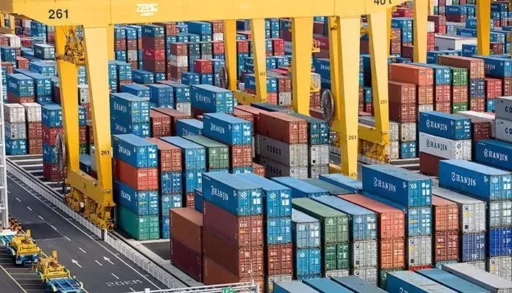Total Factor Productivity Slowdown and Sharp Decline in Working-Age Population Compound Effects… Warning of Negative Growth Possibility
An analysis by the Korea Development Institute (KDI) has revealed that the growth potential of the Republic of Korea's economy could fall to the 0% range by the 2040s.
In particular, there are warnings that, coupled with a slowdown in technological progress and changes in demographic structure, the economy may enter a phase of negative growth around 2047. KDI emphasized that economic structural reforms and an expansion of labor supply must occur simultaneously to prevent this.

On the 8th, KDI stated in its report titled 'Potential Growth Rate Outlook and Policy Implications' that "if the current level of Total Factor Productivity (TFP) persists, the potential growth rate from 2041 to 2050 will be only 0.1%, and there is a possibility of it turning negative around 2047."
Slowdown in Total Factor Productivity Leads to Decline… Base Scenario Also Shows 'Growth Stagnation'
The potential growth rate refers to the maximum level of growth that a country can sustain without inflation and is calculated based on the sum of labor and capital input and productivity (TFP).
In this analysis, KDI set the growth rate of Total Factor Productivity over the past decade (2015-2024) at 0.6% as the base scenario, while also presenting an 'optimistic scenario' where TFP rebounds to 0.9% and a 'pessimistic scenario' where it declines to 0.3%.
According to the base scenario, the potential growth rate is projected to fall to 1.5% from 2025 to 2030, 0.7% from 2031 to 2040, and 0.1% from 2041 to 2050. In the pessimistic scenario, it enters negative growth with 1.2% from 2025 to 2030, 0.4% from 2031 to 2040, and –0.3% from 2041 to 2050. Even in the optimistic scenario, the growth rate from 2041 to 2050 is only expected to hit 0.5%.

This figure is significantly lower than the potential growth rate outlook KDI announced in 2022 (1.3% for 2031-2040, 0.7% for 2041-2050). The report pointed out that "if the slowdown in Total Factor Productivity continues for an extended period, there could be a structural vicious cycle where capital returns decline, leading to reduced capital input."
Decline in Working-Age Population of 8.5 Million by 2050… Aging Population Shrinks Productivity
Another major factor in the decline of the potential growth rate is demographic change. According to the report, the working-age population, which peaked at 37.63 million in 2019, is expected to begin decreasing and drop by 3.2 million from 2021 to 2030, 5.1 million from 2031 to 2040, and around 4.6 million from 2041 to 2050.
During this period, the proportion of the working-age population is expected to fall from 69.5% in 2024 to 51.9% in 2050, while the proportion of the elderly population will rise from 20.3% to 40.1%.

Aging not only leads to a reduction in labor supply but also negatively impacts the innovation capacity and productivity of the entire economy. KDI's Chief Forecast Analyst, Kim Ji-yeon, pointed out that "younger populations have higher adaptability to technology and creative thinking capabilities" and emphasized that a decrease in the proportion of the youth could slow down the dissemination of new technologies and the creation of new industries.
“Labor Market Flexibility and Productivity Reforms Must Be Concurrently Advanced”… Policies for Labor Acquisition Also Necessary
KDI stressed that to recover the potential growth rate, there needs to be a comprehensive improvement in Total Factor Productivity, an expansion of labor supply, and enhanced capital efficiency. Specifically, it identified the improvement of restrictive regulations, easing of entry barriers, reforming the seniority-based wage structure, and alleviating excessive protection of regular employees as essential tasks.
The report explained, "An environment must be created where high-productivity innovative companies can explore new markets, and labor flexibility should be increased to efficiently redistribute resources." Furthermore, from the labor supply perspective, it emphasized that the utilization of women, elderly individuals, and foreign labor must be expanded simultaneously.
To increase the participation rate of women whose economic activities are disrupted during childbirth and childcare periods, the report concluded that expansion of flexible work arrangements and childcare infrastructure is necessary, and systematic arrangements for the reemployment of healthy elderly individuals and the acceptance of foreign labor must be established.
Image source: Reference photos to aid understanding of the article / gettyimagesbank, Reference photos to aid understanding of the article / news1.


![[Breaking News] Court dismisses injunction recognizing Kim Moon-soo as People Power Party presidential candidate status.](https://wordkorean.com/wp-content/uploads/2025/05/thumbnail-287.webp)